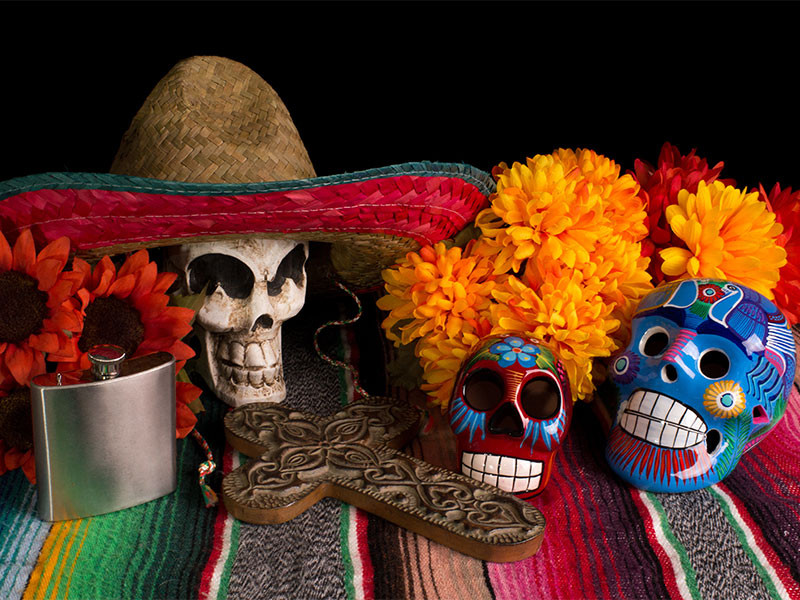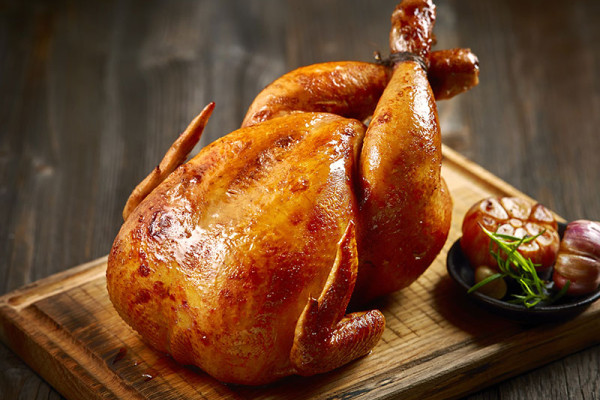Day of the Dead. A tribute to those who have gone.

We all have our own opinion or vision about death, probably because we need some kind of explanation to help us deal with it. Different cultures and religions throughout our existence in this world have approached the subject and have looked for a way to understand death and what happens beyond.
We will not enter into a debate about death but we will talk about a festive way of relating to it. This is one of the best-known celebrations on the planet: Mexico's Day of the Dead.
This festival, which is intended to honor the loved ones who have left, takes place during the last two weeks of October, although the most important days are the 1st and 2nd of November. It is believed that on those days the souls of the dead return to visit their living relatives and therefore, altars are prepared with different offerings. On day 1 the souls of the children arrive and on day 2 the souls of the adults.
A bit of history
We will go back to pre-Hispanic times, that is, before the Spaniards arrived in America. At that time it was believed that people had an entity or soul, which was immortal, that when it left the world of the living followed its path to reach a place called Mitclán or in other words, the underworld.
This place had different levels, and depending on the type of life that the deceased had led in life, they were destined to the level that corresponded to them. For example, the warriors who had perished fighting on the battlefield went to a place called Tonatiuh Ichan (House of the Sun); whereas, the children went to Cincalco, which was the house of the god Tonacatecutli.
When the Spaniards burst into America, they tried to evangelize the natives, who resisted, but with this festivity in particular, they ended up combining a little of both cultures.
The altars
Altars play a key role in these celebrations. They can have different levels, but the traditional ones have seven, since they represent the seven stages through which a soul must go through to reach eternal rest.
A structure is made with seven steps and each step is covered with a cloth. The highest step would be the first level, and there, the image of the saint to whom the family renders devotion is placed. On the second level the souls are given permission to come out of purgatory. On the third level salt is put to purify the spirit of the children in purgatory. On the fourth they place the typical bread of the dead, which serves as food for the souls so that they can continue their journey. On the fifth, the deceased's favourite food, a photo of which is put just on the next level, the sixth. Finally, the cross of a rosary is placed on the seventh step.
In addition to all these elements other offerings are placed, for example:
1. The coloured filigree paper, which symbolises the link between life and death.
2. Personal objects and photographs of the deceased.
3. White candles that symbolize love and are used to guide souls back home.
4. Marigold flowers. They are also called the flowers of the twenty petals, and symbolize the brightness of the sun and allow souls to find their way to their relatives on earth.
5. Candy skulls, which replace the skulls that were used in ancient times to honour their gods. Their intention is to remind us that our presence in this world is fleeting.
6. The incense or copal, which is placed to scare away evil spirits.
In short, the celebration of the Day of the Dead gives us a different vision of death. It is still a sad event for people who lose their loved ones, but at the same time it is experienced as a new beginning for those who have left. The fact of honouring them once a year makes them present among the living and there is the circumstance that two feelings converge: the mourning for their loss and the celebration because they are among us again.
Tackling such a sensitive subject is not easy, but perhaps understanding that death is part of our journey helps us to face it in a different way. In Mexican culture there is the belief that death is a farewell to the living but also a reunion with those who have left, so there is a sad part, but also the comforting part of seeing relatives waiting for you on the other side.
Artículos relacionados
Comment















